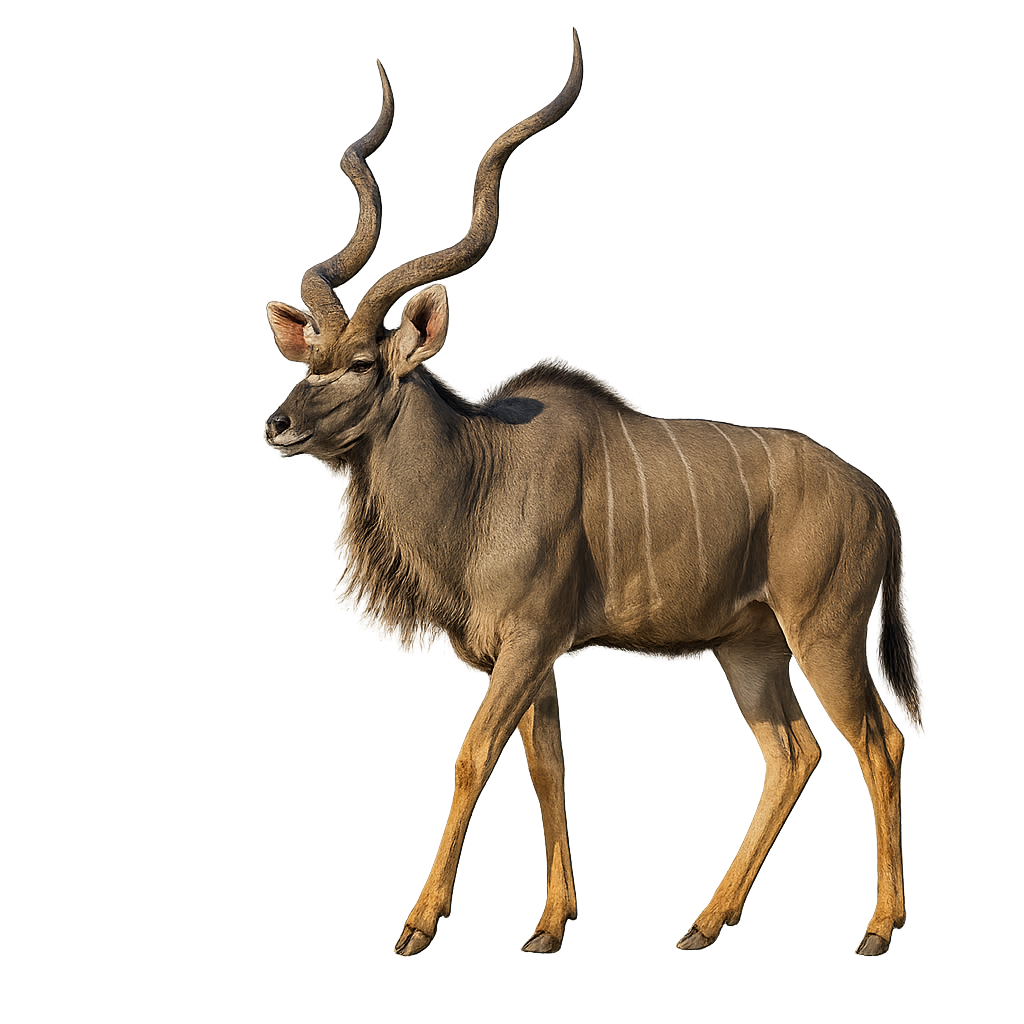Your wildlife photography guide.
Explore the greater kudu in detail, study its behavior, prepare your shots.
Where to observe and photograph the greater kudu in the wild
Learn where and when to spot the greater kudu in the wild, how to identify the species based on distinctive features, and what natural environments it inhabits. The WildlifePhotographer app offers tailored photography tips that reflect the greater kudu’s behavior, helping you capture better wildlife images. Explore the full species profile for key information including description, habitat, active periods, and approach techniques.
Greater Kudu
Scientific name: Tragelaphus strepsiceros

IUCN Status: Least Concern
Family: BOVIDAE
Group: Mammals
Sensitivity to human approach: Suspicious
Minimum approach distance: 50 m
Rut period: January to February
Gestation: 270-280 jours
Births: September to November
Habitat:
Savanna and open forests
Activity period :
Primarily active during the day, with peak activity in the morning and late afternoon.
Identification and description:
The Greater Kudu is an elegant, large antelope, easily recognized by its long, slender legs, streamlined body, and impressive spiral-shaped horns. It stands between 1.3 and 1.6 meters at the withers, with males weighing between 190 and 270 kg, and females weighing between 120 and 180 kg. Its coat is light gray to brown, with vertical white stripes on the body, which help it blend into forests and savannas. Males have long, spiral-shaped horns that can reach up to 1.5 meters in length, while females lack horns. The Greater Kudu primarily inhabits open forests, wooded areas, and savannas of sub-Saharan Africa, notably in East and Southern Africa. Herbivorous, it feeds mainly on leaves, bark, and fruits. This antelope is rather discreet and shy, typically living alone or in small family groups. While it is not currently in immediate danger, the Greater Kudu is threatened by habitat loss and hunting.
Recommended lens:
300 mm – adjust based on distance, desired framing (portrait or habitat), and approach conditions.
Photography tips:
Approach slowly and quietly, using a telephoto lens to capture images from a distance. The greater kudu is discreet and often hides in dense bushes or woodlands.
Photograph early in the morning or late afternoon, when soft light highlights its movements or feeding behavior.
Observe it alone or in small groups, waiting for calm moments in its natural habitat to take authentic photos.
Be patient and respectful—avoid disrupting its natural behavior.
IUCN status: Least Concern. Respect its environment and follow local conservation rules.
The WildlifePhotographer App is coming soon!
Be the first to explore the best nature spots, track rutting seasons, log your observations, and observe more wildlife.
Already 1 450 wildlife lovers subscribed worldwide

